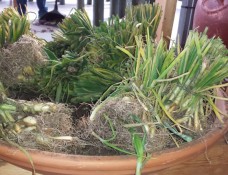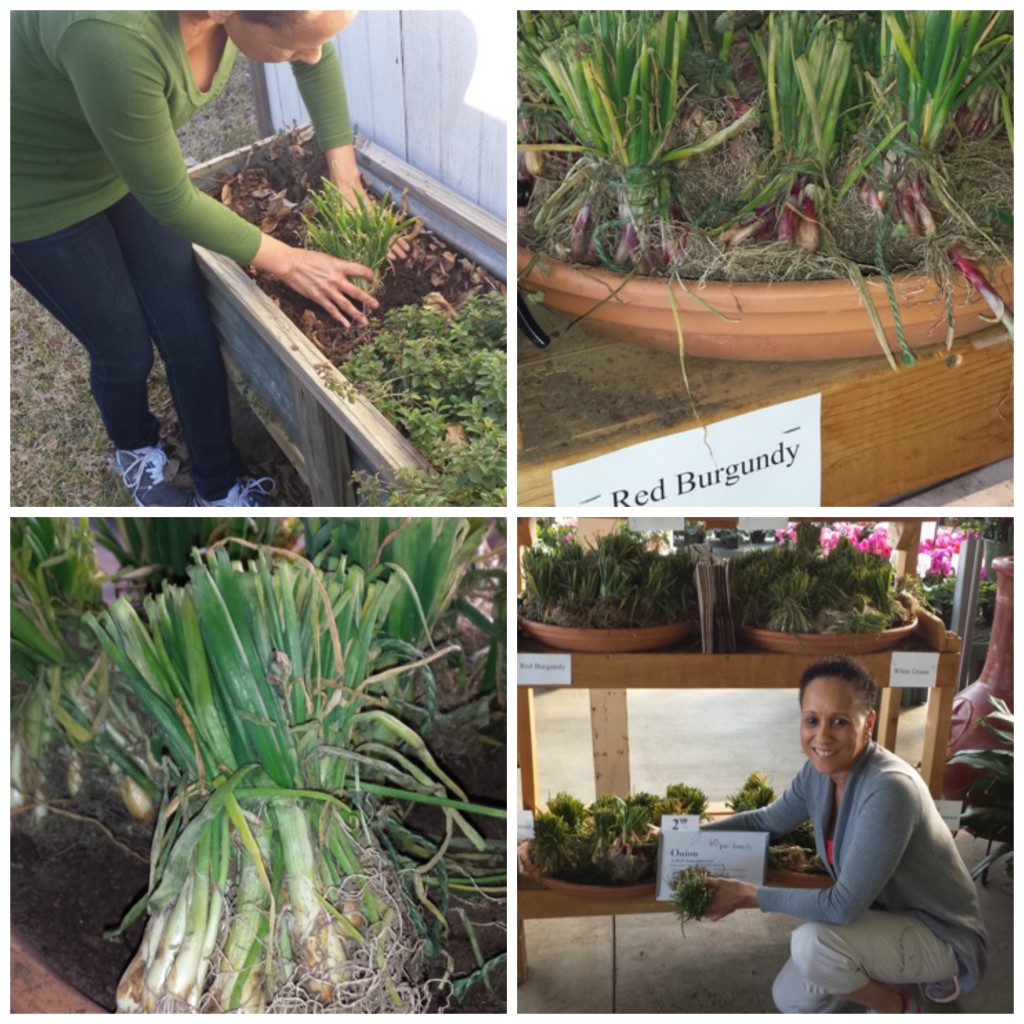
Time to Plant Onions
I love the taste of fresh home grown onions and I grow them often. And I can’t tell you how many onions I’ve eaten from Dad’s garden. When they are that fresh, I enjoy eating them raw or adding them to a bowl of cucumbers from the garden along with tomatoes and making a quick little brine to eat at the dinner table. In Texas, onions can be planted as early as January and can withstand the cold temperatures.
They typically come in a bunch of about 60 small transplant plants an each one can be planted separately so you end up with a lot of onions. This year I bought both red and white bulbs. If you don’t have time to plant them immediately, do what my dad recommends. Put the entire bunch into the ground or a pot and keep them moist until you are ready to plant them individually. You’ll see me placing mine in my container until ready to plant at which time I’ll separate them.
Onions 101 – What you should know
- The onion is a rugged plant and can withstand some weather at below- freezing temperatures.
- Onions should be in the garden four to six weeks prior to the last frost date. Without some cool days, you will not get good top growth.
- The warmer temperatures will generate a larger bulb. As a matter of fact, the trigger to activate a large bulb is warmer temperatures and longer days.
- So the sooner you get them into the ground, the better they will grow.
- Onions need full sun. They prefer a sandy loam but will grow reasonably well in clay soil.
- Prepare the soil well before planting, removing all weeds and fertilizing with a high phosphorus (10-20-10) fertilizer (my dad’s favorite)
- Onions need plenty of water during their early rapid growth.
- You should plan the site near a water supply if possible so you can control the moisture if the rains do not come at the needed time.
- Once the bulbs form, they can stand a much drier climate.
- Make it easy on yourself and buy transplants, called slips, or sets from your seed store. I got mine from Calloway Nursery, but have also found them at Home Depot and Walmart.
- If you choose sets, try to buy sets that are about one-half inch in diameter. Larger ones will likely go to seed early, and smaller ones will not make a good-sized bulb.
- They can be planted on a wide bed about four inches apart, with just the tip showing above the ground. If you prefer transplants, they too can be set out about three or four inches apart; or if you plan on using some as scallions, you may want to place them every two inches and removing every other one to eat as green onions, therefore leaving room for the remaining bulbs to reach full size.
- Slips have usually been pulled at least three weeks before you take them home and may appear dry. This is all right; and if you like, you can freshen them up by letting them stay in a shallow pan of water with a handful of compost added for a couple of hours or overnight.
- You should give your onions a side dressing of nitrogen after they have been growing for about three weeks and continue to side dress them every two weeks until the neck of the bulb begins to soften.
- Always keep the soil pulled away from the plant when working around them, and never cover them too deeply.
- They should be ready to harvest by the last of May or the first of June.
- The green tops will become soft and topple over. That is the time to pull them and leave them to dry for two or three days.
- The roots should then be snipped and the tops cut, leaving them a couple inches long. Store them in a cool, dry place where they are not touching each other and are receiving good air circulation. Some people place them in discarded panty hose, tying a knot between each onion and hanging the entire batch in a dry place.
- Onions do not have many insect problems, but thrips (a very small yellow or black insect) may be found on the inner leaves.
- Use insecticidal soap or other labeled insecticides for control (follow label directions, especially for last application prior to harvest).
- Onion harvest should occur in May and June or when the onions have matured to the desired size. Pull the onions, leave laying in the row for 1-3 days for drying, clip the tops and roots and store in a cool dry place until needed.
http://easttexasgardening.tamu.edu/tips/veggie/janonion.html
